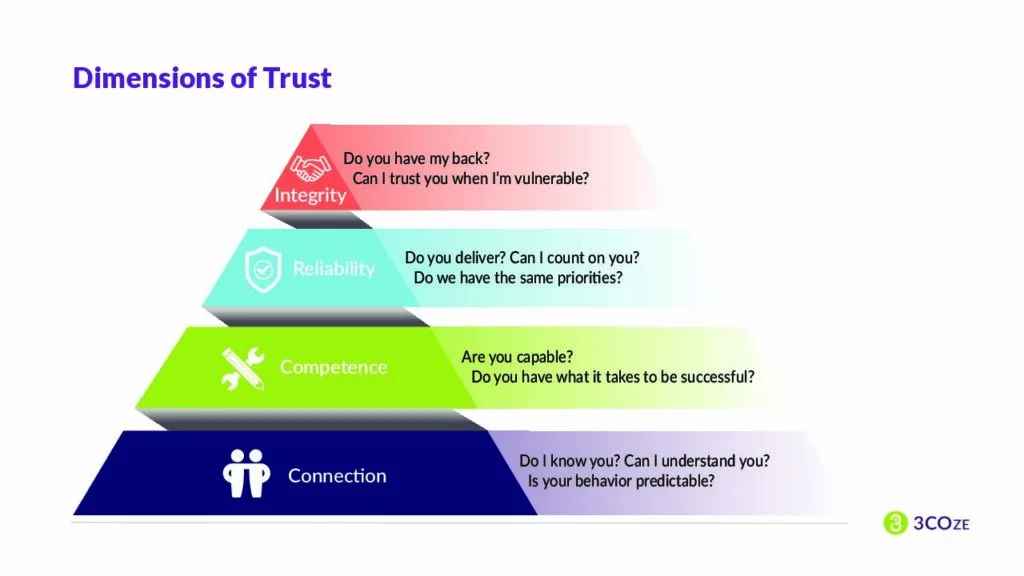Hybrid Work
Your Ultimate Guide to Adapting to a Hybrid Workplace
If there’s one topic that I’ve been asked for advice on more than any other lately, it’s how to cope with #ReturnToOffice and #FutureOfWork plans that include hybrid work arrangements.
Hybrid work has many advantages for roles with the flexibility to work remotely. If I was making recommendations solely based on optimizing the success of individual employees, I’d be an unapologetic fan of hybrid arrangements.
But I’m not an individual productivity expert. My focus is on teams. And I’ll be candid about the shift to hybrid teams; I’m nervous. We have a lot to learn if we’re going to optimize hybrid teams.
This survival guide will give you what you need to make hybrid teamwork work.
IN THIS EDITION:
Introduction to Hybrid Work and Hybrid Teams
Hybrid Work
Hybrid work arrangements, where people combine days working in an office with days working remotely, have many advantages over fully office-based work for those roles with the flexibility to work remotely. Hybrid arrangements:
- Provide greater flexibility to balance work and personal commitments
- Increase accessibility to a more diverse and dispersed workforce
- Help delineate between time for heads-down productivity and time for heads-up collaboration
- Distribute work facilitating better disaster preparedness
- Reduce how much energy we deplete by maintaining large offices and commuting (good for the planet and for us)
Hybrid Teams
Although hybrid work arrangements have more upside than downside, when we allow flexible work arrangements for individuals, we end up with hybrid teams.
Owl Labs defines a hybrid team as “a flexible work structure where some employees work remotely and other team members work from a central location or office. Hybrid team structures allow employees to decide whether they prefer an office environment or working from anywhere remotely.”
What’s interesting is that you might not have chosen to be a member of a hybrid team. You might have opted to work full-time in the office, but if you’ve got teammates who choose to work remotely (at least some of the time), you are automatically a member of a hybrid team.
Setting hybrid teams up for success is not as easy as making individual hybrid arrangements work.
When everyone is together in an office, we deal with the pros and cons of office life.
When everyone is remote, we figure out how to work as a virtual team.
In both cases, team members have (mostly) shared experiences.
Hybrid teams create different experiences for people on the same team. Different experiences often translate into an uneven playing field. The implications of this can be profound.
Focus Topic: Return-to-Work Miniseries
We are botching the return-to-office transition. We need to talk less about individual productivity and talk more about the obligation to contribute to healthy teams and organizations. But leaders, the price of admission to that conversation is to give up some control so employees can optimize their experience and to reset how the workweek is used so we have less overflow into personal time.
The Risks of Hybrid Teams
These uneven or asymmetrical experiences of members of the same team can create many issues. While I believe that each of these concerns can be overcome, it’s critical to understand them and deliberately manage in a way that mitigates the risk.
Challenges Forming Trust
Trust is critical to all teams, but research suggests it’s even more crucial to virtual and hybrid teams. The irony is that it’s harder to build trust with someone when you aren’t physically co-located.
Now play out the hybrid scenario. Some coworkers are physically together. They have downtime at the coffee machine. Perhaps they sit together while they eat (studies suggest that eating together forges connection). At the very least, they can observe one another’s body language and pick up contextual cues that help them interpret each other’s behavior more accurately.
It’s a significant disadvantage for remote workers who don’t have the same informal contact. The challenge stems from the trust disparity between those working in the office and those working from home. Jump to the section on how to build trust in hybrid teams
Disparate Access to Information
Differential access to communication–both content and context–is another source of issues on hybrid teams.
From a content perspective, remote employees must rely on meetings, email, or activity in the Slack channel for their information. In contrast, in-office employees can chat in the elevator, get an update from the boss as they come out of a meeting, and even learn from overhearing conversations between two other colleagues. That likely means that in-office employees are more in-the-know than those at home. Being better informed can translate into greater productivity, efficiency, or innovative ideas.
Managers need to counteract the communication imbalance by being very deliberate about conveying messages to those who aren’t in the office.
It’s not just enhanced content that advantages in-office employees; it’s also the context they pick up.
Imagine that the manager in the example above is conscious of the communication gaps and therefore chooses to forego the chat with the in-office employees and replace it with an email to the team. Although this solves the problem of different access to content, there are still imbalances.
For example, the in-office team might see the boss walk out of the meeting looking frustrated and red in the face. When they receive the email with the boss’ description of the meeting, this context will make a meaningful difference in how they interpret it. For example, the in-office employees might notice the boss’ curtness but attribute it to how much heat she got in the meeting with her boss. Without contextual cues, the remote employees might interpret the tone in the email as hostility toward them. Context matters.
The Friction of Asking for Help
Another gap between in-office and remote teammates is in access to assistance. Research has shown that remote employees experience more social friction in asking for help than people in the office.
Social friction refers to the idea that it’s difficult for remote workers to know what information they need or whom to ask when they know what they don’t know. Further, social friction includes the embarrassment of admitting you need help and the fear of being seen as incompetent. As a result, remote employees are less likely to ask for help.
It’s not all about whether someone asks for help or not. When you’re working side-by-side with someone, and they’re grunting and groaning over a task, it’s easy to know that they might need a hand. When a remote teammate is out of sight, you miss these clues and the cue to offer help.
Over time, the cumulative impact might cause managers to assume that in-office people are more talented, more effective, or more efficient than remote workers when the issue is really that the remote team hasn’t been set up for success.
Book Me To Speak At Your Next Event
If this article is proving useful to you and you’d like to share these insights with other members of your team or organization, I have a whole talk on how to get the most out of your feedback. Use the link below to make an inquiry:
Promoting an Effective Hybrid Team
Here are a few things to try to get all the benefits of hybrid teams while minimizing the downsides.
1) Invest in bringing everyone together when forming teams or hiring new employees. Relationships that start with in-person connections can be sustained remotely for a long time.
2) Try to coordinate anchor days where everyone is in the office, preferably weekly, but if not, monthly.
3) Post pictures of each team member in prominent office places and shared online spaces. Out of sight doesn’t have to mean out of mind.
4) Avoid hybrid meetings. If you’re meeting while some people are remote, have everyone join through technology rather than having some people together in a room and others on the screen (or phone).
5) Use one of these exercises at the start of your meeting to share contextual information that helps reduce miscommunication and erroneous judgments.
6) Establish buddies that pair in-office and remote employees and encourage them to have at least a weekly check-in to share their experiences informally.
7) Use the virtual knowledge-sharing approach to reduce social friction. Pair people up for weekly or bi-weekly sessions to share one thing they’ve figured out and one thing with which they’re struggling. (This approach was shown to be highly effective in removing the social friction of asking for help and showed enhanced performance for almost all employees.)
8) Provide unscheduled time for the team, including open, agenda-free time for team members to talk about what they’re working on or ask for help and off-task time where everyone can socialize. This article has specific ideas for how to implement on-task and off-task unscheduled time.
Hybrid arrangements allow individuals to create their own blend of remote and office work. I’m glad that the future of work can work better for each of us. I just want to make sure that while it works for each of us, it also works for all of us.
Related Posts
If you’re finding this article valuable, here are some more resources from the blog:
Fostering Trust in Hybrid Teams
As I mentioned above, trust is critical to any team’s efficient and effective operation. The challenge is that thousands of years of evolution only required us to build trust with those in physical proximity to us (especially anyone within a sword’s length ????).
Building trust with small, two-dimensional digital representations of humans is new for us. The notion of trust parlayed over phones and screens doesn’t come as naturally.
Therein lies the challenge. Trust is more important in virtual and hybrid teams and yet harder to build.
What is Trust?
Trust is your willingness to be vulnerable to another based on the expectation they will perform a particular action that is important to you, regardless of your ability to monitor or control them.
We use the word “trust” frequently, but I’m not sure that we make that connection to vulnerability as clearly as we should. Trust is difficult and important because it’s all about times when we feel exposed. And even though vulnerability in a remote team is not about life and death, it’s vulnerability, nonetheless. Trust is high stakes.
- Will you tell me what I need to know OR leave me in the dark?
- Will you think of me for an opportunity, OR if I’m out of sight, will I be out of mind?
- Will you represent my interests if I’m not in a conversation, OR will I get sold up the creek?
- Will you prioritize my needs OR put others ahead of me?
- Will you stick up for me if someone bad mouths me OR will you throw me under the bus?
See what I mean? There’s plenty of vulnerability in hybrid teams. Imagine how different your behavior would be depending on whether you believe the first half or the second half of each of these quandaries.
The Relationship Between Trust and Performance
On one level, it seems intuitive that teams with more trusting relationships perform better, but it’s worth considering why that is. What do people do differently when they trust versus when they don’t? The answer is that they take more risks. No, not like going ax-throwing with teammates (although on some teams, that would seem like a mighty big risk, indeed).
Trust, which is a form of psychological safety, leads to taking interpersonal risks such as:
- sharing information (including information that could be misinterpreted or used against you)
- asking for help (including admitting weakness or lack of competence)
- engaging in conflict (including risking being ostracized or triggering retaliation)
- abandoning control (including leaving yourself open to things going off the rails)
- adding discretionary effort (including doing favors not knowing if they’ll be returned)
Teams that don’t have strong trust will suffer through the repercussions of reduced risk-taking, including functioning with less timely information, less capable and confident contributors, more resentment and unresolved conflict, more micromanagement, and fewer examples of going above and beyond.
Establishing Trust in Hybrid Teams
I advise teams to look at trust at four levels:
This model is based on research showing that team trust has three components: ability, benevolence, and integrity. I added “connection” to reflect a more primal aspect of trust based on how our brains work. At the most fundamental level, trust is about predictability, and predictability is about your connection, comfort, and familiarity with the other person.
Connection
Do I know you? Can I understand you? Is your behavior predictable?
Connection is about increasing your comfort with one another. In the earliest stages of strengthening your connection with your teammates, you want to familiarize them with how you operate in the world.
I like to think of this as providing your Owner’s Manual as if you were a refrigerator and they were trying to figure out where to put the milk so that it doesn’t get too warm and spoil but also doesn’t get too cold and freeze (just my fridge?!?). Feel free to start from this template and modify it to build your personal Owner’s Manual to share among your teammates.
Another way to increase your colleagues’ comfort with you is to share information that helps them understand and interpret your behavior without jumping to judgments that might be unflattering. For example, if your team is willing, you can complete a personality or style assessment to gain insight into one another. Alternatively, you can share information about your backgrounds, perspectives, or hobbies that will give you context for how and why you and your colleagues show up the way you do.
Other tips would be to invest in off-task time together. That can be as simple as jumping on a Zoom call while you all eat lunch or as organized as doing a virtual escape room together.
And if you want one of the easiest hacks around, wear your company gear. Subtle visual cues that you all belong to the same club will help strengthen your connection.
Competence
Are you capable? Can I be confident? Will you succeed?
Competence is about increasing your confidence in one another. Research suggests that competence is the first dimension of trust to develop in virtual teams (whereas connection comes first when you’re physically together). Unfortunately, developing competence and getting credit for it can be difficult in hybrid teams.
One way to boost confidence is to spend more time upfront talking about how you will approach tasks. Share your plan and ask for input from others to reduce their apprehension and increase their confidence. And when you do run into a challenge, be quick to raise it so that your teammates learn to trust that if there’s an issue, you’ll be transparent about it.
Another approach for building competence and increasing confidence is a technique called virtual knowledge sharing, where pairs of teammates interview one another to share one thing they’ve “cracked” and one thing with which they’re struggling. The approach has a few benefits:
- Each person must reflect on their competence as they complete the form in preparation for the session.
- The embarrassment of sharing something you’re struggling with is reduced because everyone has to share a struggle.
- Effective approaches spread from one person to another.
It’s a technique that I recommend you try on your team.
Reliability
Will you deliver? Can I count on you? Do we share priorities?
Reliability is about people’s sense that you’re dependable and will deliver for them when it counts. This trust is often eroded in teams because leaders fail to align on priorities or prioritize at all. When you’re overworked and overwhelmed, it’s easy to let a ball drop, not because you weren’t capable or didn’t have integrity, but because you couldn’t cope with all the demands on your time.
Regardless of why you dropped the ball, it will still dent your colleague’s trust.
When you’re sitting beside your colleague, they get clues that you’re on the right track or that you’re starting to struggle. Many of those signs are invisible when you’re physically apart. When you’re not together, the secret is to be much more explicit about your priorities, efforts, and progress than you would be if your colleague were sitting beside you.
First, invest in getting aligned on shared expectations from the outset. Use open-ended questions to confirm that you’re thinking about the task the same way—document commitments. Define any terms that leave room for interpretation. Have these commitments in a shared file so everyone can access them as a touchstone.
And I know it sounds paradoxical, but the best thing you can do if you’re going to miss a commitment is to raise a red flag early. I see so many people waiting until the last minute, hoping they’ll magically find the time or that they’ll be able to cobble something together that will work. If you wait until the deadline to show your hand, your colleague has few options. If you let them know with lots of notice that you’re not going to deliver (or you might not), you leave them with options. That’s much better in the long run for your reputation as someone reliable than hoping for the eleventh-hour miracle.
Integrity
Are you transparent? Do you have my back? Will you protect me?
Integrity is all about whether your teammates can be comfortable being vulnerable. And the thing to remember is that vulnerability begets vulnerability. The first thing you should focus on is modeling and encouraging candor. You want to make a safe place for sharing bad news and uncomfortable messages.
To further demonstrate your integrity, ask for feedback from your colleagues. Tell them what you’re working on, or admit your shortcomings and ask for their help. The more you do this, the more likely it will be that you’ll have an open channel of communication when something about them is worrying you.
Another important part of integrity is addressing conflicts before they have time to grow into issues that could erode trust. Raise issues proactively, especially when you can talk about them in a problem-solving tone, rather than once you’re upset or frustrated and no longer thinking like allies.
Trust is Situational
Which of these four different components of trust will count most will depend on the situation, with some aspects of trustworthiness weighing more heavily in some cases than others.
For example, imagine that you’re on a project team and your teammate has been assigned to present your work to the executive team. You might be focused primarily on their competence.
On the other hand, if you’re trying to decide who to room with on a business trip, connection might count for a lot more than competence.
Trust is critical to the success of hybrid teams. Unfortunately, it can be harder to build trust when you don’t have the shared context, rich body language, and casual interactions you would have if you all worked side-by-side. That makes it all the more essential to invest in increasing your comfort with one another, enhancing your confidence, demonstrating your reliability, and earning your vulnerability.
Managing Time in Hybrid Teams
Prioritizing In-office Time
If you’re going to be on a hybrid work schedule – where you work in the office and remotely – it can be difficult to decide what to prioritize for your in-office days. When is it important to meet in person and when is it better to collaborate as a virtual team? In this video, I’ve outlined three questions to help you figure this out:
1) What are you interacting or collaborating on?
2) Who are you talking to?
3) Why are you interacting?
You can also read the full video transcript here, if that’s more your thing!
Featured Resource: Online Vs. In-Person Checklist
I was having a wonderful conversation about hybrid teams with my client, Liz. Her organization is starting Return to Office with a 2/3 split of in-office versus remote. She asked what advice I would give to their managers about how to use the precious two days in the office. That got me thinking about what makes an interaction office-worthy. Use this quick checklist to think through your upcoming agenda and to decide whether your content is best suited to an in-person meeting or a virtual session.
If you’d prefer this checklist in a format you can print, I’ve got it in a format you can download here.
Get The Team You Deserve
Strengthen Your Connection on Hybrid Teams
Hybrid working can be highly productive, but sometimes it’s not much fun. That’s because we tend to over-weight one type of interaction: structured, on-task conversations.
Structured Task-focused Time
Structured, task-focused time is time spent with your colleagues working toward a clear objective. (This could be time spent in meetings with the entire team or working on a project with one or two colleagues.) In any team, this will be the primary way you spend your time together.
Unfortunately, too much structured task-focused time in virtual teams can leave humans feeling more like cogs in a machine. I sense that teams are over-indexing on structured task-focused time right now.
Take a look at your calendar and calculate what percentage of your interaction time falls into this category. If it gets into the 70, 80, 90 percent range, you probably feel the adverse effects.
So, what are the alternatives?
Different Types of Connections
Before you run off and schedule a bunch of time to shoot the breeze with your colleagues, let’s talk about three alternatives to structured, task-focused time together. Each of these categories is important, and you’ll want to select from each as you build out your calendar.
Unstructured Work Time
Unstructured work time is time spent with your colleagues talking about business, but with less of a structured agenda or a pre-determined outcome.
This is blue sky time, brainstorming time, troubleshooting time, and update time. (And no, the irony is not lost on me that I’m now advocating for more unstructured time after spending a decade encouraging more use of agendas, primer documents, and preparation to ensure that time together is optimized.)
After working in hybrid scenarios for a few months, I get the sense that many of us are pining for some low-efficiency time. In moments that might seem unproductive, there is space for creativity, connection, divergence, and vulnerability. There’s room for sharing, synthesizing, and serendipity. And so much innovation comes in those moments when we’re struck by something that seemed utterly tangential.
Build unstructured work time into your week:
- Have a Friday afternoon open forum to let people ask for advice or support
- If you’re a manager, have an open Zoom line breakfast chat each week where anyone can pop in and get your thoughts on an issue
- Call a co-worker to have an informal catch-up about what they’re working on
- Invite in a customer or a consultant to fill you in on trends in the industry

Spotlight: Communication Bursts
Being on a virtual team can be highly inefficient, especially when collaborating with people in different time zones. You default to sending emails, which can really slow things down. I learned this by working on a project with a team member in Asia. At 7 pm Eastern, when I finally got a response to a message I sent first thing in the morning, my option was to work into the night or lose another day.
One option is to use a technique called Communication Burst, where you schedule a timeframe when everyone on the team will be working. If it makes sense, start the session with a quick video call and then let everyone focus on doing their work independently. (Some people leave the video call running on mute to enhance the feeling that you’re working together.)
The magic of a Burst is that when a question or issue comes up, everyone knows that they can address it right away. They can call an individual, huddle with a few people in a quick web call, or respond immediately to DMs or Slack messages.
Running a Burst on your team might mean asking people to be online from 8-10 pm occasionally, but it will be worth it to know that there are times when you can be efficient as a team. Just make sure to schedule a proportional amount of time off that they can use for non-work activities.
Structured Social Time
This is the time you spend with your team focused on connecting as humans—no need to accomplish any tasks! In structured social time, you create shared experiences; forge connections through laughter, and see your teammates as more complete people.
And while there are options for structured social time that are just silly and fun, there are also activities that will contribute to a healthier and more constructive team dynamic.
Add one or more of these activities into each quarter:
- Use an assessment tool to understand better one another’s styles
- Use one of the Virtual Team exercises I created for you
- Volunteer together on a project in your community (e.g., a Habitat for Humanity build)
- Develop your team ground rules
- Do an in-person or virtual team-building activity (I did a virtual escape room, and it was great)
- Have a theme day and encourage people to be creative about how they bring the theme to life
Unstructured Social Time
This is the time you spend with one or more team members enjoying one another’s company. In unstructured social time, you strengthen the understanding and the bonds with your colleagues. In the office, this is the time you spend having lunch together, or perched with one butt-cheek on someone’s desk debriefing the weekend, or chatting as you walk back from a meeting.
Try these approaches:
- Have a team lunch once a month where you leave the cameras on and hang out. Do a couple of rounds where you break out into smaller groups to chat
- Move all meetings to 45 minutes and use 10 minutes right after the meeting to catch up with one other participant
- Invite one person in your team or from another team to have a virtual coffee at a set time each week
- Send a funny cartoon or video to a colleague that’s working on something particularly challenging

Spotlight: Buddies
What if each person who works remotely had a buddy? As a buddy, you could be responsible for sharing any informal communication the remote team member might have missed at the water cooler. And you could make sure that the person is being heard in meetings. You could have the person’s back in conversations that they might not have been included in (and could remind people that they need to include the person).
Not All Team, All the Time
Investing in stronger connections as a team should not be at the expense of either individual productivity or work-life balance. At the same time that you’re scheduling these team interactions, schedule communication blackouts. Set times when your team won’t be having meetings or calls, won’t be expecting responses to emails, won’t be open to socializing. Legitimize time for efficient independent work and time for people to be offline and not thinking about the team at all.
Collaboration in Hybrid Teams
One of the most important ways you need to reset if virtual or hybrid teams are a part of your future is to take a long, hard look at your communication approaches. Most of us have been going ditch to ditch between full-on Zoom video calls and terse, easily misinterpreted emails.
You can use this framework to assess the content of your collaboration and then choose from the menu of options to fit your communication technology to the task at hand.
Characteristics of Communications
Before we can talk about the techniques that will facilitate better collaboration, you need to consider a couple of essential dimensions on which communications differ. The key to revitalizing your virtual collaboration is knowing what type of communication your particular effort requires.
Rich Versus Lean Communication
One dimension in which communications vary is how much context and nuance they convey.
Information richness is “the ability of information to change understanding within a time interval.”
This comes from the capacity of the communication medium to transfer cues that help you interpret meaning. For example, rich communication gives you access to gestures, pitch and tone, facial expressions, and body language that help you interpret the person’s words.
Face-to-face interactions provide many contextual cues to help you interpret the meaning of a message, whereas a text message contains few. (One reason that emojis have become popular is that they add emotional tenor otherwise missing from text-only communications.)
When to Use Rich Versus Lean Media
Although it might seem like having richer communications is always preferable, they are often more time-consuming and costly than leaner forms, and therefore you should use them sparingly.
Invest the time and energy in rich communications if:
- Your message is novel, complex, or equivocal (and might be misunderstood)
- There is more uncertainty and greater ambiguity
- The parties to the communication don’t share context, language, or jargon
- Conflict is likely
Suppose you’re dealing with a simple message where the protocols and terms are well-established, and the path forward is relatively certain. In that case, that’s the place to economize by using lean communication methods.
Synchronous Versus Asynchronous Communication
A second dimension on which communications vary is the timescale of the interaction. Synchronous communication is when the sender and receiver interact with each other simultaneously, whether that is through written text, images, audio, or video. Asynchronous communication is when there is a lag between when the message is sent and when it’s received.
A phone call is a synchronous interaction, whereas a voicemail is asynchronous, as are emails, Slack or Teams threads, and intranet boards.
Advantages of Synchronous Collaboration
- Creates a sense of urgency
- Promotes interaction and idea-sharing
- Allows immediate response and feedback
- Creates accountability in the moment
- Increases social presence
Disadvantages of Synchronous Collaboration
- Interrupts focus and flow on other tasks
- Reduces time for reflection
- Imposes a uniform commitment of time
- Often lacks documentation
- Challenging with time differences
Advantages of Asynchronous Collaboration
- Allows anytime, anywhere access
- Facilitates the creation of threads
- Documents that collaboration process
- Provides time for reflection
- Reduces social anxiety and increases participation and diversity of ideas
Disadvantages of Asynchronous Collaboration
- Slows progress on immediate priorities
- Leaves room for misinterpretations to fester
- Creates an overwhelming volume of information
- Becomes impersonal and isolating
- Reduces the sense of accountability to contribute
When to Use Synchronous Versus Asynchronous Approaches
Depending on where in the world your teammates are, it might be easier or harder to coordinate synchronous communication. (I’ve been doing a project with a client in Sydney, and it’s a serious challenge to find times that work with Toronto.)
Invest in synchronous communications when:
- The content requires immediate attention
- You want to promote personal connection and rapport
- The topic is sensitive and would benefit from everyone hearing it together
On the other hand, if the task doesn’t require immediate action and would benefit from more reflection or research time, stick with asynchronous methods.
Picking the Right Collaboration Technology
If you combine the two dimensions, you can create a 2×2 of collaboration approaches (you can download a PDF version of this here). Each of the four categories has its purpose and its advantages. Within each category, there’s a range of technologies you can use to maximize the benefits and limit the downsides of the category.
If your virtual collaboration could use a little revamping and revitalization, share the map with your team and discuss how you might shift some of your interactions to a different format better suited to what you’re trying to accomplish. Let me know what you think. Is there a new mode of virtual collaboration you’re going to try?
I’ve noticed that many teams I work with have settled into a pattern where they’re using predominantly two collaboration approaches—Zoom calls (or Webex, or Teams) and emails (or Slack, or Teams). In addition, they default to either Rich/Synchronous or Lean/Asynchronous approaches. I hope you’ll consider using a comprehensive range of options to suit your task better.
Take these three examples:
Onboarding—A Case for Screen Capture Video
Imagine you’ve hired a new team member in Cleveland, and you’re trying to bring them up to speed on all the software you use to do business.
You might schedule a Zoom call and walk them through how to add a new client to Salesforce.com. That would be easy, you could share your screen, and they could watch you and ask questions. The only problem is that we know there’s a lot at stake for the new employee, and because they want to appear competent and make efficient use of your time, they might not be forthcoming if they don’t feel confident. And now imagine when they try to enter a new client independently and can’t remember exactly what you did—ugh.
What if you switched to an asynchronous method instead of using a synchronous method?
You could do a screen recording with a voice-over that would give them the warmth and welcome of your voice (and the chance for casual comments like, “I know it makes ZERO sense that we call it that, but we do!”).
The difference is that now they have the recording, and they can watch it five times without feeling sheepish. They can go back to it over and over. And better yet, when the next recruit joins, you’ve already got the recording.
Training is a perfect situation for using this relatively rich asynchronous approach.
Connecting—A Case for a Phone Call
What if you want to check in on a colleague who’s been quiet on your virtual meetings recently?
It seems intuitive that if you’re trying to show that you care and you value the person, you should do a video call so they can see your face and feel the connection.
Interestingly, research by Michael Kraus of Yale University suggests that empathy is stronger (and more accurate) when you forego the video and instead opt for a phone call.
There’s something magic in how we attune to someone when we hear only their voice. Plus, you benefit from reducing the stress of intense eye contact that comes with face-to-face interactions. I’ve long advocated for situations where you sit or walk in parallel to reduce the intensity of an exchange. Now we have the virtual team equivalent.
If you think there might be strong emotions involved, friction, or guilt, skip the Zoom and pick up the phone.
Co-creating—A Case for Audio and Screen Sharing
When your virtual team needs to co-create something, you might tend to jump on a video call and start brainstorming. Maybe one person takes control of the screen and documents what you’re coming up with. (This is how I facilitate virtually.) It seems like a decent approach, right?!?
Maybe not.
It takes considerable brainpower to process all the visual cues you’re getting from monitoring your teammate’s faces. You’re trying to figure out how your boss is feeling, whether your colleague is bought in, and what just annoyed Bruce, all based on tiny digital renderings of their faces. It’s not great for keeping your attention focused on contributing.
Research by Tomprou et al. suggests that the team’s collective intelligence is higher when you turn off the cameras and instead use audio and screen sharing. It seems to be better synchronization with one another that’s to thank for the enhanced effectiveness.
If your goal is to be task-focused, productive, or innovative, try turning the cameras off and allowing everyone to focus on the shared screen and the emerging output.
Working Through Conflict on a Hybrid Team
When you aren’t working side-by-side with a colleague every day, it can be more difficult to work through conflicts.
Many of us were taught to save difficult conversations for times when we’re face-to-face and if your schedule doesn’t coincide with that of your teammate, that might be putting off an uncomfortable conversation for a while.
If it’s an issue that should be addressed promptly, work through these steps to broach the subject remotely.
Or if you’d prefer it in writing, here are the steps:
1) Prepare what you’re going to say.
This is a big advantage of remote conflict. When you’re physically together, conflicts often erupt without advanced warning. Maybe you get so frustrated in a meeting that you roll your eyes and accidentally launch an epic battle. You’re into the thick of it without time to consider what you want to say, which often means the conflict will get personal and unproductive.
With a virtual team, you usually have time to think through your points and even prepare some examples that will make the conversation more constructive.
2) Provide a heads up that you want to have a discussion.
When you’re together in person and you have something uncomfortable to say, your body language will give it away. A furrowed brow or a change in eye contact will tip off the person that you’re displeased. Even if they only pick up on it subconsciously, it will be a useful warning to them.
That information is less easily available to the person working remotely. Use a quick call, message, or email to set up the conversation, such as, “I’m worried that we’re getting off track with the transformation project. I’m sending you a meeting update so we can talk about it.” That will give the person an opportunity to collect their thoughts so that the conversation is more of a dialogue than a monologue. Otherwise, it could feel like you’re ambushing them.
3) Use the best quality communication technology you have.
If you read the section above on rich versus lean communication, this is the time for the richest communication technology that you’ve got. If your office has an elaborate holographic video conferencing system, use it. If you have Skype, use it.
Make sure you’re adding in as much body language as possible to the conversation. If you’re stuck with the phone, add in a running commentary. “I’m sorry I was quiet for a moment there. I’m frustrated and was trying to figure out how to say this.”
4) Have a cheat sheet.
Here’s another great thing about conflict over the computer—you can have notes to yourself in front of you. Maybe it’s something as simple as the word, “BREATHE” in giant letters across a sheet of paper. Maybe it’s the list of the four points you want to make sure you cover.
[Another benefit is that with video conferencing, you can see yourself on the screen…this is great for instant feedback about how you’re coming across.]
5) Work through the feedback.
The actual content of your discussion should be exactly the same as if you were in person, so I won’t go into it here. If you’d like a refresher on the basics, you can find it here.
6) Follow-up, follow-up, follow-up.
When you’re in the same office, you have many chances to demonstrate that things are getting better. Eye-contact will return, and you’ll start to smile at each other (even if it’s a little strained).
Slowly, you’ll see that any hard feelings caused by the conflict are abating. You don’t have the benefit of that if you’re not together. That makes it important that you schedule a follow-up discussion and also that you use informal opportunities to provide feedback about what’s working and what isn’t. “It’s been a week since our conversation, I feel like we’ve made great progress on staying on track. I’d love to keep improving on our daily log progress. What do you think?”
7) Reconnect on a lighter note.
I’ve always hated the concept of “no news is good news.” If that’s the case on a virtual or hybrid team, it means you’re only going to hear something if the shit is hitting the fan.
To strengthen your relationships across different locations, ensure that more of your communications are positive than negative. Call with a quick message of thanks every once in a while. Send an interesting article or funny clip to let your colleague know you’re thinking of them. Invest as you would in any relationship so that when conflict arises, you give each other the benefit of the doubt.
Epilogue
I believe the hybrid teams are here to stay and for the most part, I’m happy about it. The benefits will be worth the investments that will be required to make hybrid teamwork work. Just don’t forget to make the investments. Otherwise, hybrid teams could be the worst of both worlds, instead of the best.
MORE HYBRID WORK RESOURCES
Sources Cited
[1] What Is a Hybrid Team? Here’s Everything You Need to Know – Katherine Boyarsky | Owl Labs
[2] Remote Work Statistics – Everything you need to know – ZOE Talent Solutions
[2] Research: How Virtual Teams Can Better Share Knowledge – Jason Sandvik, Richard Saouma, Nathan Seegert, and Christopher Stanton | HBR
[3] An Integrative Model of Organizational Trust – Roger C. Mayer, James H. Davis and F. David Schoorman | Academy of Management Review on JSTOR
[4] Developing Multidimensional Trust Without Touch in Virtual Teams – W. Randy Clark, Leigh Anne Clark, Katie Crossley | Marketing Management Journal
[5] Voice-Only Communication Enhances Empathic Accuracy – Michael W. Kraus | American Psychologist
[6] Speaking out of turn: How video conferencing reduces vocal synchrony and collective intelligence – Maria Tomprou, Young Ji Kim, Anita Williams Woolley | PLoS ONE via ResearchGate

















